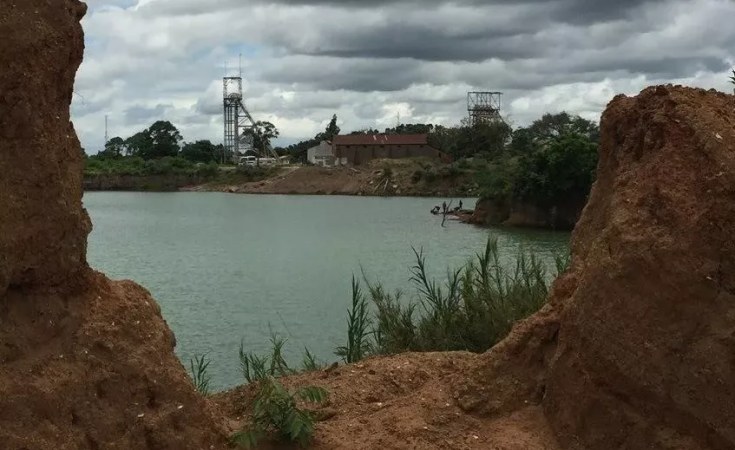Natalie Chilikwela is done with talking. The 18-year-old has experienced the harmful impacts of toxic lead contamination in her hometown of Kabwe her whole life and has listened to many promises from politicians - but nothing much has changed. As part of a youth group, the Kabwe Environment Youth Network, she has raised awareness among Kabwe's communities about the dangers of lead, and called upon officials to provide medical treatment and to clean up the toxic mine waste that is causing the problem. "Now," she says, "We are done talking. We want to see action."
Kabwe is one of the world's worst pollution hotspots because of contamination from a former lead and zinc mine. The mine began operating during the British colonial period, was later nationalized, and was closed in 1994. But neither the responsible companies nor the government ever cleaned up the mine's toxic waste. As a result, lead dust from the large uncovered waste dumps blows over nearby residential areas such as Chowa, Kasanda, Mine and Makululu, endangering up to 200,000 people.
A 2019 Human Rights Watch report on the situation in Kabwe illustrated the harmful impact of lead contamination on children's rights to health, information, and education. According to the World Health Organisation, lead is a toxic metal with no safe level of exposure. It causes stunted growth, memory loss, developmental delays, and many other irreversible health effects. It can also cause coma and death. Children are especially at risk. Medical researchers estimate that over 95 percent of children living near the former mine have elevated blood lead levels, and that about half of them have blood lead levels so high that they require urgent medical intervention.
According to the Minister of Green Economy and Environment, Hon. Collins Nzovu (MP), the moment for action may have finally arrived. Hon. Nzovu recently outlined his vision of Kabwe as a "Green City," where business developments "proceed on top of buried lead surfaces." Many Kabwe residents are asking: Could this be the moment when the toxic lead that has been harming residents for decades finally gets addressed?
The term "buried" suggests that the government would cover the mine's waste piles in such a way that they don't further contaminate the environment, a method sometimes described as "capping." This method has been successfully used in comparable lead and zinc mine cleanups in the United States and elsewhere. The capping process should be part of a comprehensive plan to provide residents a remedy for their suffering. The ministry made the commitment at a roundtable conference organized by a civil society alliance, the Alliance for Lead-Free Kabwe, which has been pressing for a comprehensive cleanup of the former mine site.
Already in March 2022, President Hakainde Hichilema instructed the Ministry of Green Economy and Environment to establish a technical committee to "address and lead the process of comprehensive remediation" in Kabwe. However, the technical committee only had one meeting, on June 3, which representatives from government agencies, the University of Zambia, and civil society organizations attended. Since then, it has been hampered by delays and not been given the priority it deserves; a subcommittee has been working on the committee's terms of reference - which have not been made public - since mid-2022.
A full year after the president's directive to set up the committee, it is vitally important for the body to promptly begin work on a concrete and feasible plan for the comprehensive cleanup of Kabwe mine waste. The government should also ensure that the committee shares its terms of reference with civil society groups and other stakeholders for input, publishes the final terms of reference, and conducts consultations with international and Zambian experts on mine remediation.
The government, with a World Bank loan, has been undertaking some efforts to address the contamination. The Zambia Mining and Environmental Remediation and Improvement Project is testing and treating children, and cleaning up a small number of homes, a school, and a highly polluted canal. These are important measures, but as long as the source of the contamination is not cleaned up, they are not sustainable, and any progress made will quickly be reversed.
On hearing the ministry's plans, Natalie Chilikwela said she feels excited. But she cautioned: "Going from Kabwe's current condition to [a] 'Green Town' isn't the simplest task and I can't help but wonder what the results will be."
Kabwe can only be considered "green" if the cleanup of the toxic mine is the number one priority in the government's plans. The children and young people of Kabwe deserve a swift and lasting solution that allows them to live in a safe, clean and healthy environment.
Namo Chuma is the director of Environment Africa Zambia, an environmental nongovernmental organization based in Kabwe. Juliane Kippenberg is associate children's rights director at Human Rights Watch. Both organizations are members of the Alliance for Lead-Free Kabwe


